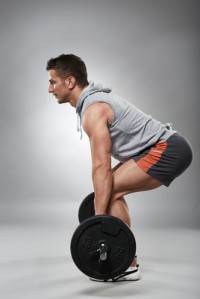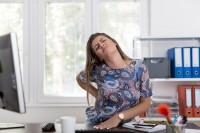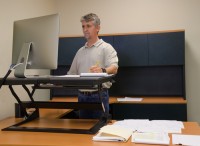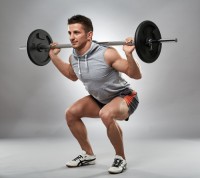Are deadlifts good to do if you have a sore back?
Deadlifts are a fantastic exercise, a functional compound exercise that strengthens the lower back, hips, hamstrings and deep inner trunk muscles.
Deadlifts target the very muscles that weaken in back pain sufferers over a period of time.
But do we recommend them if you have a sore back?
The answer is NO – we do not.
The thought of bending over with a sore back, let alone bending over to pick up the equivalent of your own body weight is the last thing on earth people suffering from back pain feel like doing.
The reason you have your back pain, is because the muscles integral to supporting your body weight and your back are letting you down. They are extremely weak leaving you to feel very vulnerable as soon as you lean forward of your midline.
Most back pain sufferers when we ask them to squat down. Will squat down with their knees forward, their backs dead straight in a fixed vertical position whilst balancing on their toes.
Many so called strength and conditioning experts recommend deadlifts for back pain sufferers because they target the exact areas that are weak in the body resulting in back pain.
The problem with this approach is that the vast majority of back pain sufferers do not have the balance and stability to bend forward and correctly position themselves to carry out a deadlift.
Similar to the photo shown above of the back pain sufferer, the deadlift start and end position will have their body weight forward of their midline which will place all the load back onto the lower back. Not only is this poor technique, it will create pain for most (not all) back pain sufferers.
Of the back pain sufferers who can carry out a deadlift in this fashion without creating back pain, it defeats the purpose of doing a dead lifts as due to the poor technique the muscles that a deadlift should target are not engaging due to the distribution of weight all being forward of the midline.
So in short, deadlifts are a brilliant exercise if carried out correctly.
In all my time seeing chronic back pain sufferers, I have seen only a small handful of people who could carry out a deadlift with correct technique at the time they presented with pain.
The very muscles that are weak and causing back pain are the very muscles that are integral to supporting you through a perfect deadlift.
My advice is to focus on strengthening these muscles, improve your pelvic stability and balance. Then as your back pain symptoms settle, and you start to feel confident, add deadlifts to your regime. Start with small weights and focus on balance and correct technique. As your balance and technique improve, increase the resistance building up to your body weight over a period of time.
Remember – if you are doing a deadlift and it hurts your back – You are doing it wrong.
A correct deadlift will provide you with relief and a feeling of strength through your back and deep into your trunk.
With perfect technique and respect for this quality exercise – when the timing is right the deadlift will become your best friend. It will leave you feeling strong, and completely avoiding back pain as long as you do them.
Please view our video for further clarity.




